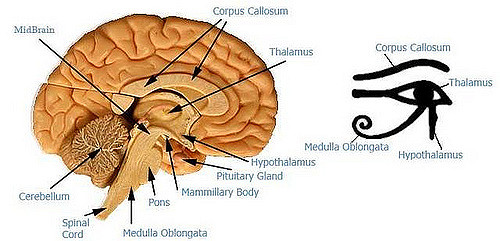Consciousness as a Filter Product
It's almost 400 years since René Descartes wrote his famous words “I think, therefore I am.” What more have we learned about the nature of consciousness and reality since then?
We all know what consciousness is. We can tell when we’re awake, when we’re thinking or when we’re pondering the Universe. But many scientists still find it hard to really explain the nature of this perception, even as our understanding of the brain increases rapidly.
In some current models, consciousness simply emerges as a by-product of the complexity of our brain. The brain receives input from its environment and reacts to it and conscious experiences are created as a result of this brain activity. But although the complexity and interconnectedness of the brain undoubtedly play an important role, there is not always a tight correlation between conscious states as reported by a subject and brain states as measured using a brain scanner. For example, researchers have found that psilocybin, the drug contained in magic mushrooms which is known to trigger feelings of oneness with the universe and a trippy hyper-consciousness, does not work by ramping up the brain’s activity as they’d expected, but instead reduces it.
In an alternative view, known as the 'filter model' of consciousness, the brain works with consciousness to filter a vast array of input from exterior sources and chooses which input to acknowledge. This sensory-filtering system develops from childhood and is continually shaped by subsequent situations and experiences. In this view, conscious reality is actually only a representation of that which we choose to experience in order to create a stable, manageable environment for ourselves.
The idea behind a filter model of consciousness is that all stimuli, whether they come from outside or inside the body, are filtered, which means that we are constantly bombarded with stimuli that we don’t acknowledge. There are examples of filtering being hardwired, such as being biologically able to only see or hear certain wavelengths, as well as examples of filtering being situation dependent, such as background noise or a pink elephant in the room.
The part of the brain involved in selective filtering is an area known as the thalamus. Classically, the thalamus is thought to be involved in consciousness, functioning as a kind of relay where sensory neurons meet and are sent to their destination in the cerebral cortex. When the cortex receives a type of information that it deems a priority (like focusing on a computer game for example), it sends a signal back to a part of the thalamus known as the reticular nucleus. This structure uses the neurotransmitter GABA to inhibit transmission of other 'irrelevant' signals, like a pink elephant standing in front of you, from the thalamus to the cortex.
When we enter sleep, the brain steadily dismantles the models and concepts we use to interpret the world, leading to moments of experience unconstrained by our usual mental filters. This could explain the trippy state, known as "hypnagogic state," between wakefulness and sleep we sometimes experience.

To learn more about the difference between merely processing visual information in the brain, like in a computer, versus having a reportable conscious experience of it, researchers have been studying blindsight, a phenomenon that was first discovered in 1970. It’s caused by damage to the primary visual cortex, one part of a vast network of brain areas that process vision. Without that part, some aspects of vision are still possible but the conscious visual experience has disappeared.
It turns out that in people with blindsight, a dot flashing on a computer screen can snag attention even when it doesn’t snag conscious experience: Attention and awareness can be separated. These findings made researchers curious whether this might be true in anyone, not just people with brain damage.
To find out, the same experiment was done, but with a dot that was very dim and hidden in a distracting grid of colors and lines. Even if you don’t have clinical blindsight, you’ll swear you’ve seen no dot at all. And yet the dot can still snag your attention, sharpening your ability to process anything else that happens at the same location. You can attend to the dot even if you’re not aware of it.
We can now put people in an MRI scanner while they perform all kinds of tests like that, and check to see what specific networks in the brain light up when they pay attention without conscious experience. What networks light up when awareness is added? How do those networks connect to each other and what happens when one or the other is disrupted?
Something in the brain computes the information that allows us to say, “I have a conscious experience” and we may be closing in on what that system is and how it works.
(April 2016)

